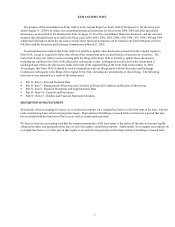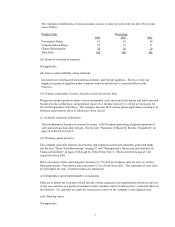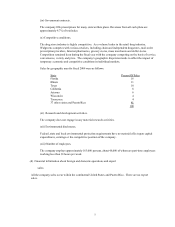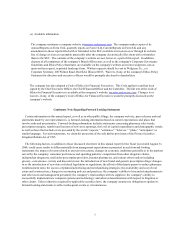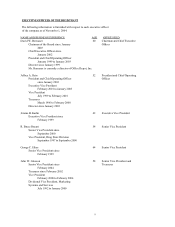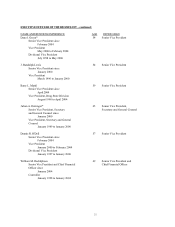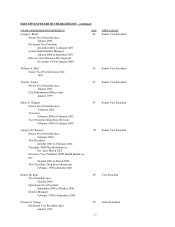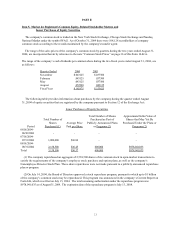Walgreens 2004 Annual Report Download - page 3
Download and view the complete annual report
Please find page 3 of the 2004 Walgreens annual report below. You can navigate through the pages in the report by either clicking on the pages listed below, or by using the keyword search tool below to find specific information within the annual report.
3
PART I
Item 1. Business
(a) General development of business.
Walgreen Co. (The "company" or "Walgreens") was organized as an Illinois corporation in 1909. Walgreens is the nation's
largest drugstore chain with sales of $37.5 billion, recorded its 30th year of consecutive sales and earnings growth. During the
year, the company opened 436 stores for a net increase of 355 new stores after closings and relocations. The total number of
stores at August 31, 2004 was 4,579 located in 44 states and Puerto Rico. In addition, the company operates 3 mail service
facilities. The company anticipates operating more than 7,000 stores by 2010.
To support store expansion, the company opened four distribution centers in the past three years, the most recent in Moreno
Valley, California in fiscal 2004. These centers are twenty percent more productive than our older distribution centers. In July,
Walgreens broke ground for the first of a new-generation distribution center in South Carolina. Scheduled to open in 2007, this
center is expected to provide another twenty percent productivity improvement.
Prescription sales continue to become a larger portion of the company's business. This year prescriptions accounted for
63.2% of sales compared to 62.0% last year. Third party sales were 91.7% of prescription sales compared to 90.6% a year ago.
Overall, Walgreens filled 443 million prescriptions in 2004, an increase of 10.8% from the previous year and more than any other
pharmacy retailer.
Pharmacy sales trends are expected to continue to grow due, in part, to the aging population and new drug development.
Prescription growth will become more important to controlling overall healthcare costs. Pharmacy sales in the United States are
expected to double by 2012, growing to $446 billion.
In November 2003, Walgreens pharmacy benefit manager (PBM) introduced Advantage90, a 90-
day retail prescription option to
mandatory mail programs. Since its introduction, 81 managed care plans are offering Advantage90 to a total of 714,000 members.
Digital photofinishing contributed significantly to the gross margin increase for general merchandise in 2004, as the company
accelerated its replacement of analog photo labs with digital machines.
During fiscal 2004, Walgreens' market share in 59 of the top 60 front-end categories increased, as compared to all food, drug
and mass merchandise competitors. Today, 55 million people live within a mile of a Walgreens and four million shoppers walk into
a Walgreens store daily.
During fiscal year 2004 the company added $939.5 million to property and equipment, which included approximately $750.4
million related to stores, $93.8 million for distribution centers, and $95.3 million related to other corporate items. Capital
expenditures for fiscal 2005 are expected to be approximately $1.5 billion.
(b) Financial information about industry segments.
The company's primary business is the operation of retail drugstores.
(c) Narrative description of business.
(i) Principal products produced and services rendered.
The drugstores are engaged in the retail sale of prescription and nonprescription drugs and general
merchandise. General merchandise includes, among other things, cosmetics, toiletries, household
items, food, beverages and photofinishing. Customers can have prescriptions filled at the drugstore
counter as well as through the mail, by telephone, and on the Internet.


